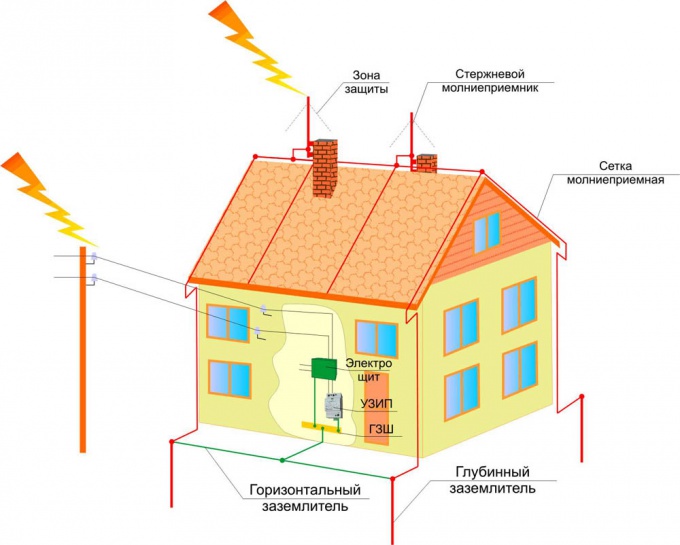You will need
- A device for measuring resistance M416, 2 auxiliary electrode, 2 wires with cross-section of 3.5 square millimeters with a length of 40 m Diameter electrode 16 mm, length 0.6 m.
Instruction
1
Place the auxiliary electrodes connect and check the earthing to the device M416 according to the shown scheme.
2
Hammer auxiliary electrodes into the ground to a depth of not less than 0.5 m blows vertically, not swinging them and loosening the ground around them. To increase the precision of the measurements (to reduce the resistance between the auxiliary electrodes and the ground) wet with salt water the ground around the auxiliary electrodes or increase of their number. Extension rods hammer at a distance of not less than 2 metres between them. The rods, forming a single auxiliary circuit, connect with each other electrically.
3
During measurement, place the device horizontally as close as possible to the measured circuit ground to reduce the length of the wire connecting the circuit ground to the device. This will reduce the measurement error introduced by this wire.
4
To measure resistance, do the following steps:1. Switch B1 is put in the position of ×1.
2. Press the button and rotate the handle "slidewire", ensuring the maximum approximation of the arrow to zero position.
3. The result of the measurement read from the scale of the slidewire, not forgetting to multiply it by a multiplier set by the handle B1.
If the measurement result is greater than 10 Ohms, set the switch of the multiplier of B1 in the next higher position and repeat measurements according to items 2 and 3.
2. Press the button and rotate the handle "slidewire", ensuring the maximum approximation of the arrow to zero position.
3. The result of the measurement read from the scale of the slidewire, not forgetting to multiply it by a multiplier set by the handle B1.
If the measurement result is greater than 10 Ohms, set the switch of the multiplier of B1 in the next higher position and repeat measurements according to items 2 and 3.
Useful advice
This method is called the "Principle of reduction potential 3-point scheme" and is the best option to achieve acceptable measurement accuracy using relatively inexpensive equipment.
